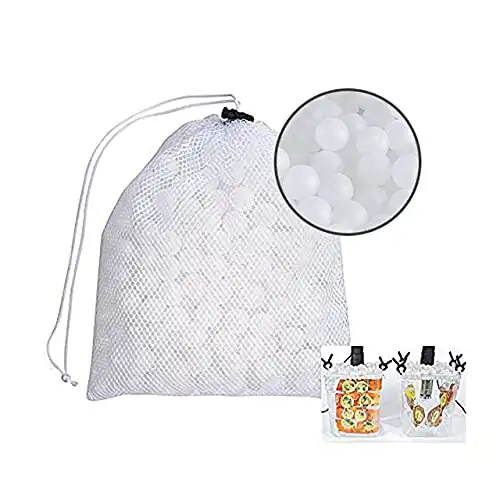If you love sous vide cooking, chances are you’ve dealt with evaporated water or heat loss from time to time. There’s nothing worse than getting home from work only to realize your sous vide machine turned off because too much water evaporated throughout the day.
Been there, had that happen.
What’s the best way to cover sous vide containers to prevent heat loss? I’m sure you’ve tried plastic lids, plastic wrap, aluminum foil, towels, and other things.
But have you tried ping pong balls or sous vide water balls? This guide will cover everything there is to know and if it acts as a good sous vide container cover. Hint, sous vide balls are great to use.
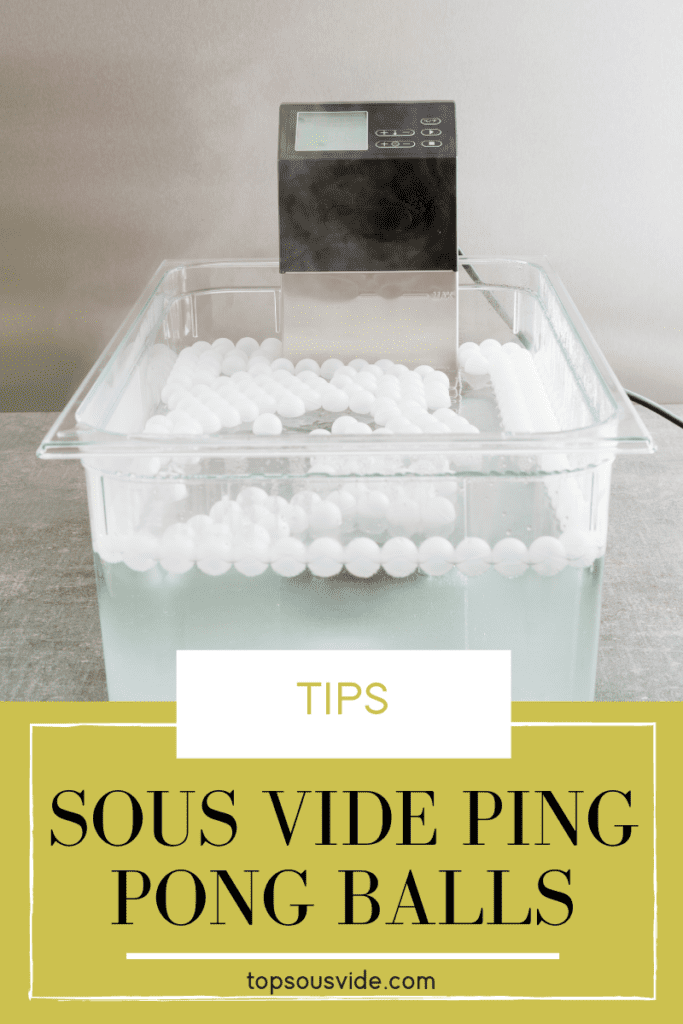
Table of Contents
What are Sous Vide Balls for?
Sous vide balls are used to cover vessels or pots and keep them from losing heat or moisture during the cooking process. This is especially helpful when cooking foods for a longer periods of time.
The heat gathers at the bottom of the balls and is retained in the container as it rises and then falls. The steam is spread equally throughout the surface of the container, enabling even and thorough cooking of foods.
This makes for the juiciest steaks, pork chops and baby back ribs, and renders them more naturally flavorful, hearty and nutritious.
*Head to this post for some of my favorite sous vide containers!
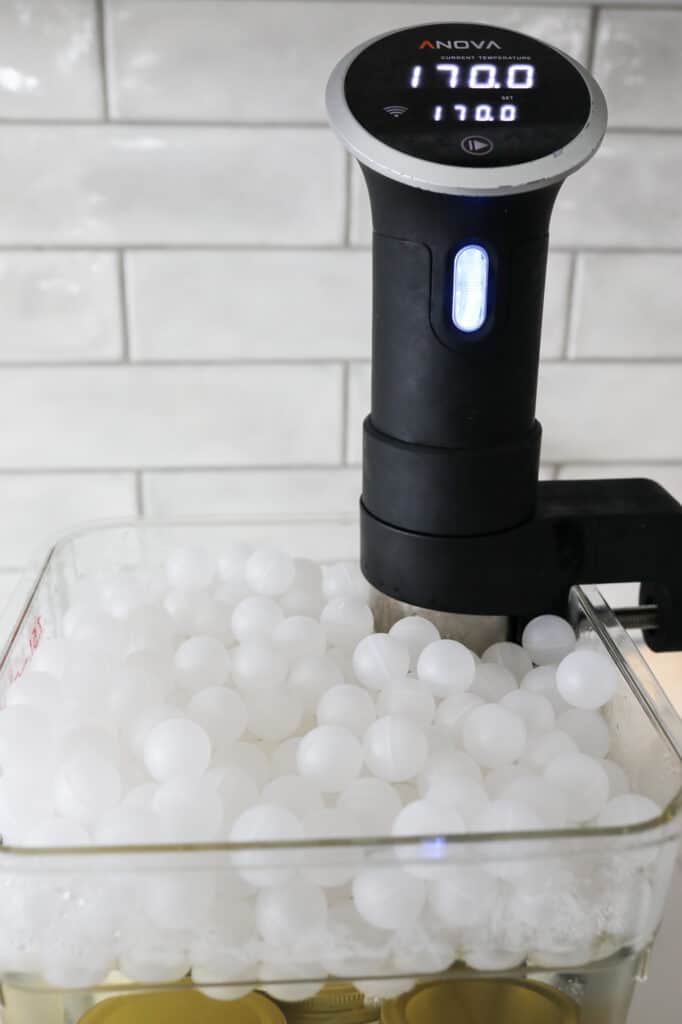
Sous Vide Balls vs Regular Ping Pong Balls
A regular ping pong ball is designed for table tennis and, thus, must be made with sturdier material.
The ping pong ball is made of a stiffer form of plastic known as celluloid, and a see-through and flammable type of plastic in layers of camphor and nitrocellulose.
Sous Vide Ping Pong Balls are flexible, spherical objects made of polycarbonate, plastic, foam or other shapeless, malleable materials.
These materials are the same for the cooking pot and the lid in which the sous vide balls are placed.
When it comes to size and function, the balls conform exactly to the interior of the cooking pot or container.
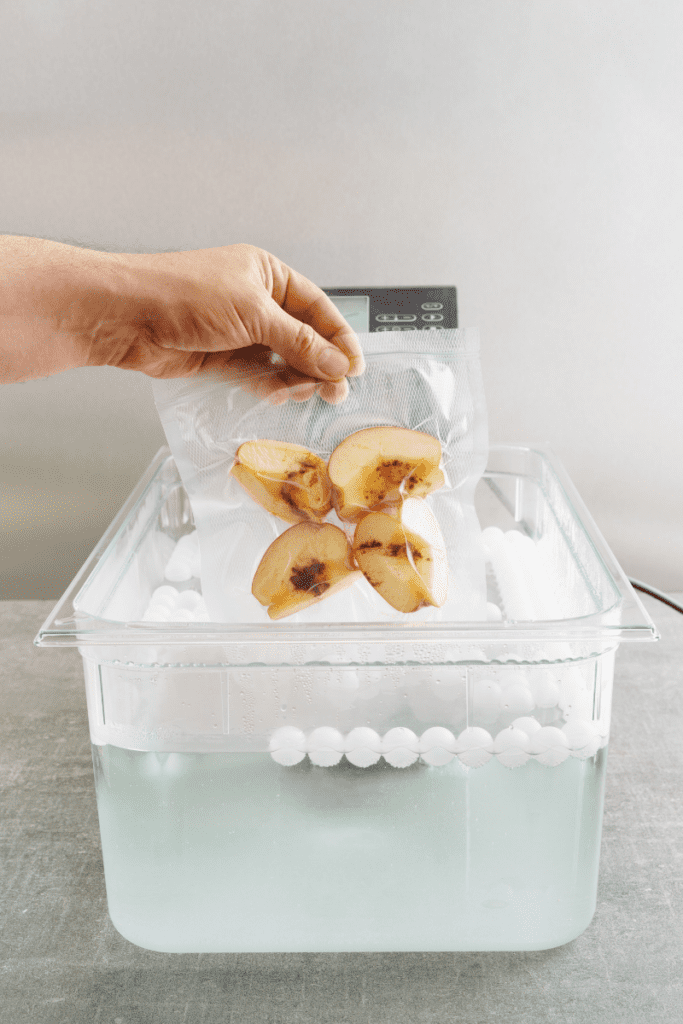
That means you can use different sized containers without purchasing separate container lids for all of them. All you need is your sous vide balls!
You can use a pot one night for a small cooking session and a larger plastic storage container for a bigger meal. You’re no longer tied to one dedicated container.
While ping pong balls are meant to bounce, sous vide balls are produced for cooking and trapping steam to prevent its escape from a sous vide container.
Benefits of Sous Vide Ping Pong Balls
The main benefits of sous vide balls are that they are flexible, affordable, convenient and easy to clean.
1. Heat Insulation
The biggest benefit is the blanket of insulation. The water that evaporates turn into steam that will condense on the balls and stay in the container, so you don’t lose water.
2. Flexible Sizes
Sous vide balls work in any container, regardless of the size or shape, as long as you have enough balls to to surround the water bath container surface.
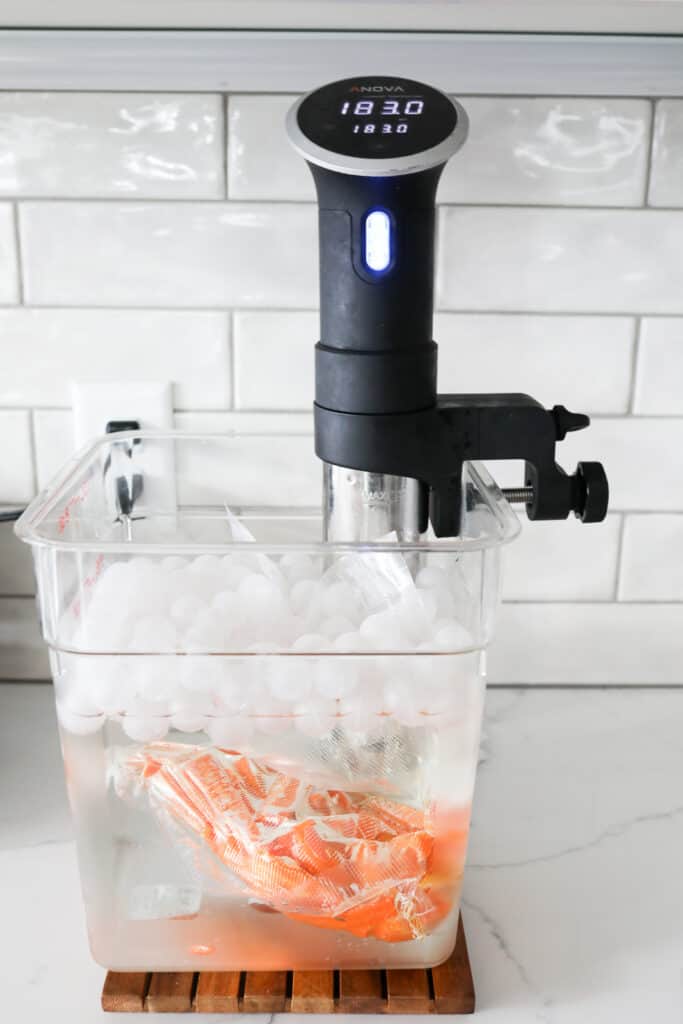
3. Cheaper
A standard lid is twice as expensive as a package of balls. I would usually purchase the sous vide balls in a package of 75 to 100.
4. Easy Access to Food
For convenience, I can add more food, change its position or remove it without having to deal with a lid or plastic wrap. I simply dip a pair of tongs into the container or pull the bag from its interior.
5. Easy Cleanup
In terms of clean-up, after I finish cooking, I just drain the water using a strainer to capture the sous vide balls and let them dry. Storage can be in a bag or a pot, so they won’t take much more space.
How to Use Sous Vide Ping Pong Balls
Using sous vide balls is simple. All you need to do is set the balls in the water. They’ll float on the water surface to insulate the hot water from evaporating.
You can put them in before you put any food in to help speed up the heating process or after your food is in – whichever you choose!
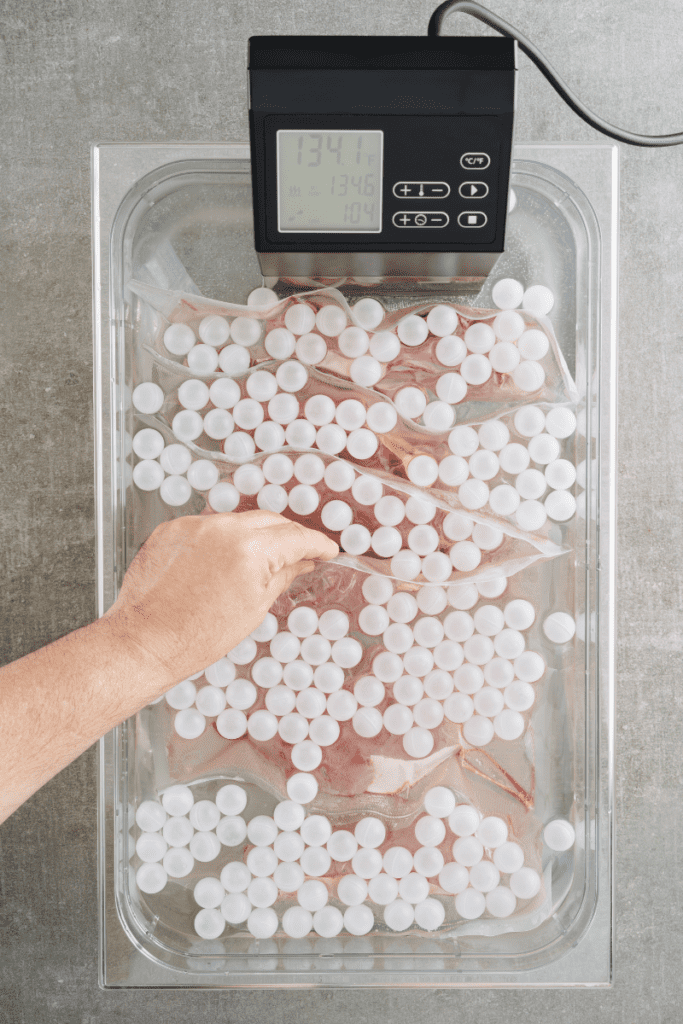
That’s pretty much it. Instead of using a container lid or foil/plastic wrap, use the sous vide balls.
Sous vide balls are low-maintenance in that they do not require much cleaning either.
When you’re done cooking, simply drain the balls in a strainer when you dump the water. Most sous vide balls come in a mesh bag (like these sous vide balls that I use and love) and can be placed back in the bag to finish drying.
You could also store them directly in your sous vide container for easy storage! Then all you need to do is pull out your container with the sous vide balls inside and add water!
Sous Vide Ping Pong Balls vs Container Lid
Sous vide balls are among the most ideal means of keeping heat and moisture within a cooking vessel or pot because of their flexibility, convenience, affordability and ease of cleaning.
However, some sous vide owners prefer to use a container lid. The hardest thing about using a lid is the need to cut a hole in the lid to fit the sous vide cookers. The cutting process is not easy and will often result in cracked plastic and holes that were too big or small.
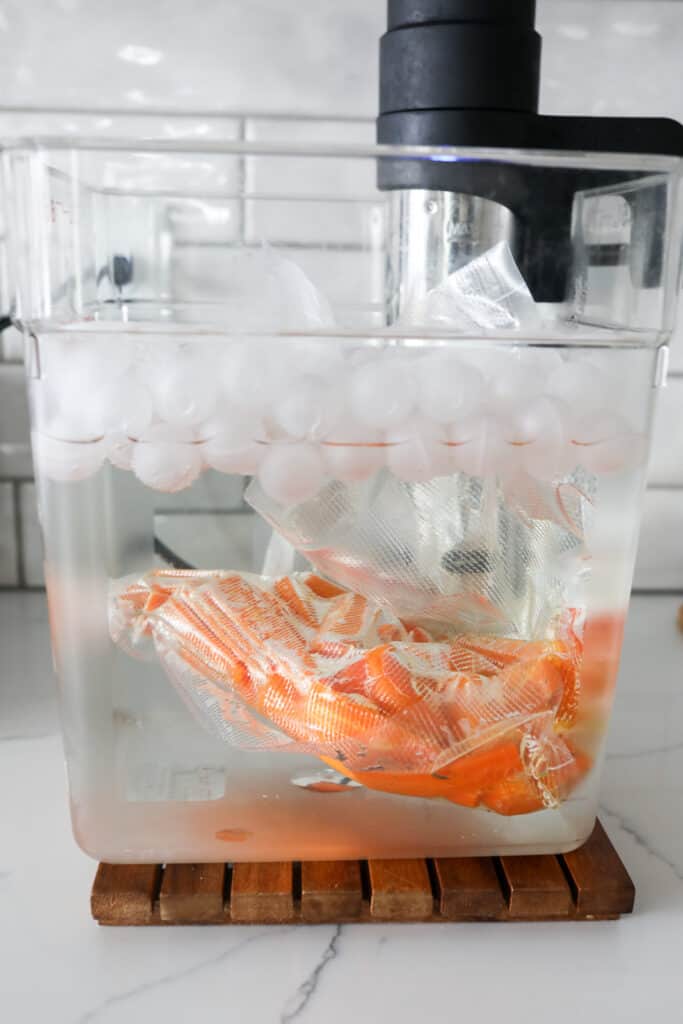
As a result, the sous vide industry began to manufacture lids with holes already cut into their tops. This is a great option if you find one that fits your sous vide machine! Just know that if you get a new sous vide machine at some point you’d likely need to get a new lid.
The combination of container size, container lid, and sous vide cooker could be endless. It could be end up being an expensive upgrade process. Sous vide balls easily solve the lid issue!
Sous Vide Ping Pong Balls Final Thoughts
I think the sous vide ping pong balls are a great option that’s flexible if you want to cook more or less. The only problem is that they don’t work very well as an actual ping pong ball. If you want to play ping pong with them, you can still try it out!
If you still don’t have a container yet, be sure to check out this post with the best sous vide containers!

